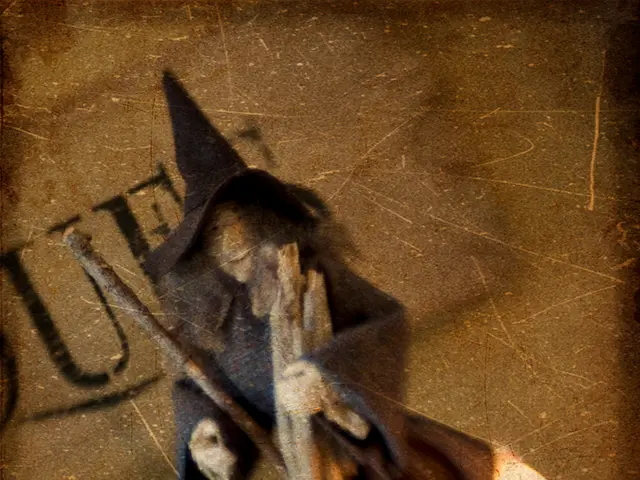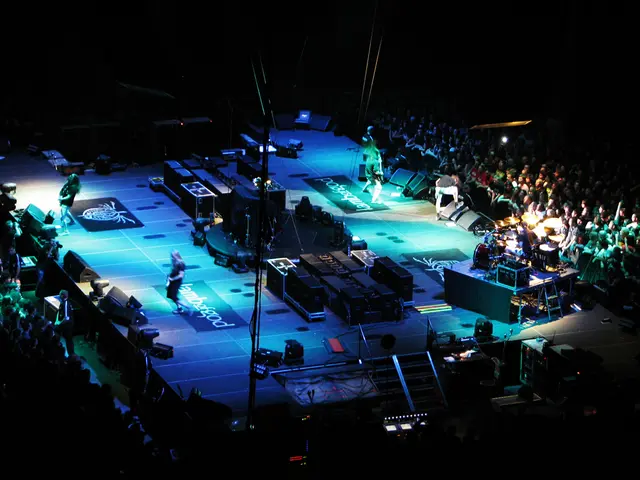When the Crow Invasion Devastates the Harvest
Ravens Wreak Havoc on Crops during Harvest Season - Crows Ravaging Maturing Crops and Ruining Farmers' Yields
Let's Talk
When crows take over a farm field, it's a disaster for farmers. Ordinary scarecrows aren't enough to stop them, so the State Environment Office (LfU) has partnered up with the Weihenstephan-Triesdorf University of Applied Sciences (HSWT) to experiment with various deterrents and minimize future damage.
The collaboration kicked off in April in the hard-hit regions of Straubing, Erding, and Asbach-Baumenheim (Donau-Ries district). More farmers are welcome to participate. In Straubing, the main crow colony, housed near the zoo, numbers about 1000 breeding pairs, according to an LfU representative.
Their preferred food is anything animal-based, such as earthworms. If these are scarce, they dig up plants and seedlings to eat the larvae on the roots. They also enjoy pumpkin seeds and radish heads.
Traditional methods like scarecrows or reflective CDs aren't always successful in protecting fields, given the crows' learning abilities. Under the pilot project, then, balloons, kites, and crow decoys are used more extensively, says HSWT's Nils Teufel, a researcher.
Other options being explored include shooting. Special permits allowing temporary lifting of the hunting ban have been granted by Straubing's city and district administrations. However, breeding animals may not be targeted, and no crows have been killed thus far.
Since crows can resemble rooks, hunting permits must also be secured for project areas, in case a hunter mistakenly shoots the wrong species, warns the LfU representative.
Frustrated farmer Johannes Frank, who grows medicinal plants, shows photos of fields devastated by crows. Even protective nets laid over seedlings do not deter the birds. They poke holes in them. People, vehicles, or scare tactics don't faze the crows; they simply keep pace with the planting machine and uproot the seedlings again.
To cultivate his field, six workers labor from morning to evening for four days. The crop damage caused by crows cannot be compensated. His customers demand reliability.
In 2023, Frank's farm - alongside three other members of the Straubing Fruit and Vegetable Cooperative - incurred around 140,000 euros in crow damage. Frank has now placed special kites from LfU on his field, as well as plastic decoys of dead crows. These, he hopes, will scare away the crows and look so convincing that some passers-by have mistakenly called the police, thinking they saw actual dead birds.
"The first 14 days after planting are critical for my medicinal plants," says Frank. "This year, the crows didn't adapt to the decoys as quickly as they have in previous years. 'There's no guarantee,' said Nils Teufel."
Crow Control in Urban Settings
The project is set to last until harvest and be evaluated by year's end. In Dachau, as part of the LfU project, attempts have been made to deter crows in city centers. Fourteen birds were shot, and 83 nests were removed. Data from this facet of the project is not yet available.
The Bavarian State Association for Bird Protection (LBV) views the project critically. "We see more and more that, when wild animal coexistence is tense, the call for shooting comes sooner than seeking solutions that also respect species and animal protection," the association stated.
The influx of crows into cities is due to changes in agriculture. There are fewer intact tree groups for nesting in colonies, says the LBV. "The birds move into cities - often as a last resort."
- Environment
- Harvest
- Straubing
- Plants
- Birds
- Lettuce head
- Erding
- Donau-Ries
Insights from Enrichment Data:
Unconventional deterrent methods such as balloons, kites, and crow decoys (often called "scarecrows" or visual deterrents) are popular and successful in both urban and agricultural settings. These methods are typically designed to exploit the birds' natural fear of predators or unfamiliar objects.
Upgrading traditional scarecrows with automated systems that use motion sensors, sound transmitters, and lights has proven more effective, covering up to 0.75 hectares and detecting birds at distances up to 50 meters.
Regular variation and combination with other methods (such as chemical repellents or predator control) are recommended to prevent habituation and maximize results.
When using visual deterrents, movement and variation in appearance or placement are key. Automated systems that combine sound, light, and movement keep birds away longer, providing sustained protection for crops in both urban and agricultural contexts.
- The collaboration between the State Environment Office and the Weihenstephan-Triesdorf University aims to minimize future damage from crows in farm fields.
- In Straubing, the main crow colony housing approximately 1000 breeding pairs, scare tactics have proven ineffective.
- Traditional methods like scarecrows or reflective CDs aren't sufficient due to the crows' learning abilities.
- Under the pilot project, balloons, kites, and crow decoys are used more extensively.
- Special permits allowing temporary lifting of the hunting ban have been granted for the project areas.
- Crows can resemble rooks, so hunting permits must also be secured for project areas.
- Frustrated farmer Johannes Frank, who grows medicinal plants, has experienced severe damage from crows.
- Even protective nets laid over seedlings do not deter the birds, who poke holes in them.
- The first 14 days after planting are critical for medicinal plants, and crows can cause devastating damage.
- Frank has placed special kites from the State Environment Office on his field, as well as plastic decoys of dead crows.
- In Dachau, as part of the LfU project, attempts have been made to deter crows in city centers.
- Fourteen birds were shot, and 83 nests were removed, but data from this facet of the project is not yet available.
- The Bavarian State Association for Bird Protection views the project critically, citing a call for shooting that comes sooner than seeking solutions protecting species and animals.
- The influx of crows into cities is due to changes in agriculture, leaving fewer intact tree groups for nesting in colonies.
- Unconventional deterrent methods such as balloons, kites, and crow decoys are popular and successful in urban and agricultural settings.
- Upgrading traditional scarecrows with automated systems that use motion sensors, sound transmitters, and lights has proven more effective.
- Regular variation and combination with other methods are recommended to prevent habituation and maximize results.
- When using visual deterrents, movement and variation in appearance or placement are key.
- Automated systems combining sound, light, and movement keep birds away longer, providing sustained protection for crops.
- The environmental science of climate change can affect farming practices and the impact of crows on harvests.
- Investing in financial markets, such as stocks and bonds, can contribute to wealth management strategies to fund research on sustainable farming practices.
- Home-improvement projects, like creating birdhouses or bird feeders, can help attract beneficial birds and deter pest birds like crows.
- In the realm of cooking, recipes for roasted or stewed crow are found in some global cuisines, albeit not commonly enjoyed.
- Food and drink, from dining in restaurants to preparing meals at home, can be part of lifestyle choices that prioritize environmental sustainability.
- Family dynamics can be impacted by food choices, such as when deciding to raise animals for meat consumption or adopting a vegetarian or vegan lifestyle.
- In outdoor living, organic gardening practices can provide a suitable environment for beneficial insects and relatively few crows.
- Data and cloud computing can be used to analyze patterns of crow populations and migratory patterns to better predict and manage their impact on harvests.
- Sustainable living advocates promote practices that minimize harm to the environment, such as reducing reliance on animal-based foods and supporting local, chemical-free agriculture.








